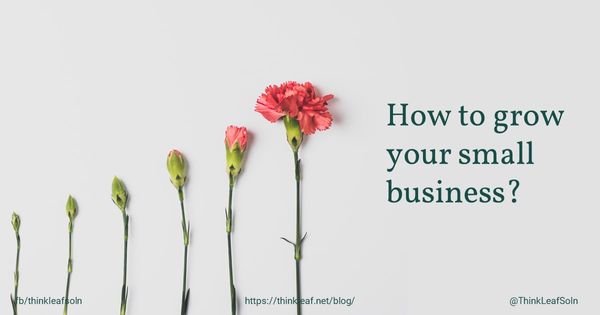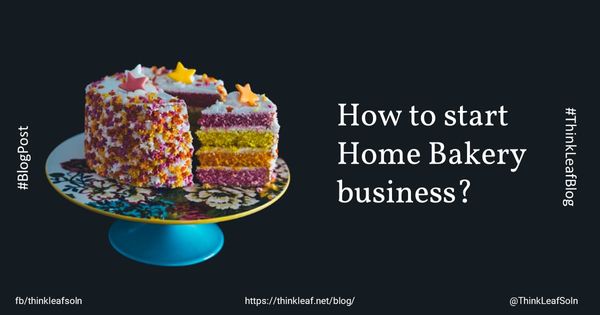Start-ups have been the buzzword for the past decade. Numerous start-ups have come up in the past 15 to 20 years and have achieved great success. These days everybody wants to start a startup. But what is a startup and how does it differ from other forms of business? Let us dive in.
Introduction
A start-up is started with the intent to pursue an objective. Start-ups are formed to research and launch products and services that will impact the future. The founders - the people who start the startup - are on a quest to solve problems and provide long-term solutions.
A business on the other hand involves either manufacturing or trading products and providing services. These products and services are already established and have a ready market that can be sold.
What is a Startup?
We define Startups as business organisations formed to solve a unique problem or to create a novel product or service. Startups work on creating solutions that will be an answer to a pain point experienced.
Start-ups are formed to incubate an idea, grow it, and make it available as a product or service to the public at large. Businesses on the other hand are focused on dealing with the available products and services.
Startups are businesses, we do not deny that but they are a niche subset of the larger set of the business world. You can also say that Startups are businesses with a twist.
Startup v/s Business - The Difference Between a Startup and Businesses
There are many differences between a start-up vs business. As a business owner, you need to know them to avoid losses and also to identify opportunities. We encourage you to classify your venture either as a start-up or a small business to better understand what you shall be dealing with.
The Intention
A start-up is formed to develop a product or a service that is currently unavailable in the market. Something that can impact the industry. The developed product or service fills the gap left open in the market or industry.
Successful startups are known to disrupt and disturb the industries they are operating. They change the nature of the business operation.
Also please note that start-ups tend to have an exceptionally high rate of failure too.
Small businesses start with the intention to earn profits. Businesses are started to trade products or to manufacture them. Even some businesses operate in the service sector on profit by providing their service.
The Objective
Start-ups have an objective to scale to greater heights. They start their business to capture the sector or the market they operate in.
In other words, start-ups are more likely to operate to take over the world. Start-ups are very aggressive in nature. Startups though working on new ideas and concepts validate them before starting out.
Businesses on the other hand are bootstrapped i.e. they operate with the capital they have and try to make a profit with it. They try to expand by taking on debt from banks and financial institutions.
The Capital and Funding
Start-ups may or may not start with adequate capital. They take funding from angel investors or VCs to fund their growth. They might be bootstrapped when they start. When they have an MVP (Minimum Viable Product), they connect with angel investors.
When a start-up is confident that the product or service they developed has a potential market they approach angel investors for funding their growth and research. In exchange, the investors get ownership given to them in the form of equity.
As a start-up grows, the revenue may start to come in. Even if the revenue is not enough to cover the expenses it will still take funds from investors. There are several stages of investments in which investors ranging from angel investors to VCs participate to get a stake in the growing start-up.

In the case of businesses, especially small businesses the firm is bootstrapped. The capital which the owners bring in is used to trade and earn profit. To fund their growth small businesses tend to approach financial institutions and banks to get loans.
This debt that they acquire is used to fund their growth and expansion. When small businesses take loans they do not give away equity or ownership. Instead, they need to provide collateral for their debt.
The Growth Factor
Since start-ups are focused on growth and acquiring customers and capturing the market they tend to be aggressive. Start-ups invest heavily in the product or services they develop. They spend on marketing and advertising to acquire customers. They try to get as many customers as possible in the shortest span of time.
Small businesses on the other hand are not that aggressive. They tend to take a traditional approach which is much less aggressive than that of a start-up. If a small business has the funds they might go for marketing and spend on it. But most small businesses start with the acquisition of customers with traditional means.

Small businesses tend to approach people with their products and services and build up a customer base. After they have established a customer base, they then lookout for opportunities in other markets. This process is slow and can take somewhere from a year to many years.
Small businesses are not keen to spend on advertising and merchandising. They don’t even have a budget set aside for such activities. In case they want to expand they might incur expenses for marketing.
The Revenue Model
Start-ups do not have a revenue model right from the beginning. They focus on product development. Whereas small and conventional businesses will have a revenue model from day one. This stark difference is important to note.
Many start-ups focus on building the product and getting it in front of their customer. When customer has used a product or service, they will be charged a certain amount.
Start-ups may not make money from day one. They may go on without any revenue earnings. Conventional businesses tend to make money from day one and hence they survive. In case a business is unable to make money, it will be forced to close down.
Start-ups tend to provide the product or service free of charge for a certain period of time. For example, many SaaS companies offer their service as a trial for a period of one month. After the expiry of this trial period, the customer can avail of the service by paying a monthly or yearly fee as a subscription. Other start-ups tend to sell their service outright for a lumpsum amount.

Startups gauge the market and customer sentiments. Many start-ups introduce pricing on different aspects and see what the customer is willing to pay for it.
SaaS companies offer their services or products with different features and hence differences in pricing. The same service shall cost you as low as $5 a month with a basic set of features. To get the full suite of features you will have to pay more.
A nice example here is Zapier, which offers its automation-based SaaS with variations in features and pricing. Check out their pricing page to get an idea of how variations are made to cater to different sets of customers.
WhatsApp the messaging app, bought by Facebook for $19B in October 2014 had no revenue stream defined. They still do not have any income source as a messaging application.
Conventional businesses have a revenue model set right from Day 1. The model can change with time but the changes are primarily tweaks to adjust variations and propel sales. Most small businesses operate on the simple principle of marking up the product or service they sell.
The Profitability
Start-ups are known to spend more than what they earn. Some start-ups spend the investment they receive from angel investors and VCs to fund their growth. This growth brings in more customers and a larger market share.
The amount of money they spend in the early stages of growth is much higher than what they earn during that period. They might charge $5 a month from a customer but the cost incurred to serve them might be more than the $5 they earned.
Startups believe in acquiring customers and keeping them loyal to their products. As profitability is concerned they operate on losses. Many startups are known to have operated at a loss for several years before they broke even.

A good example here is Youtube which Google acquired in 2006 for $1.65B. At that time YouTube did not have a concrete revenue stream and was almost a cash-burning machine. In February 2020, as reported by Verge, Google revealed that "Youtube generated $15 billion last year and contributed roughly 10% to all Google revenue."
Small businesses make a straight profit on every transaction they do. This profit is a set margin or markup. They do not sell their products or services below a certain level of margin. This helps them to cover their costs and make a net profit too.
In case the SMB sees a loss they might try to avoid it altogether. They do not spend more than what they earn. They keep their expenses under strict control. Small businesses are strictly controlled to ensure profitability remains and the organisation survives.
Conclusion
We have covered the relevant points highlighting the stark differences between a Startup and a Business. The differences are present from the way they work to what they intend to achieve. We suggest you have a clear understanding of the business you intend to launch.
Many new businesses are launched stating they are a startup but they tend to be businesses operating to earn simple profits by trading goods and providing services. Startups solve problems and develop solutions. These solutions are then monetised to earn revenue for sustaining the business.
Would you like to start a Startup or a Small Business? Please share this post on Facebook or Twitter and let us know.


